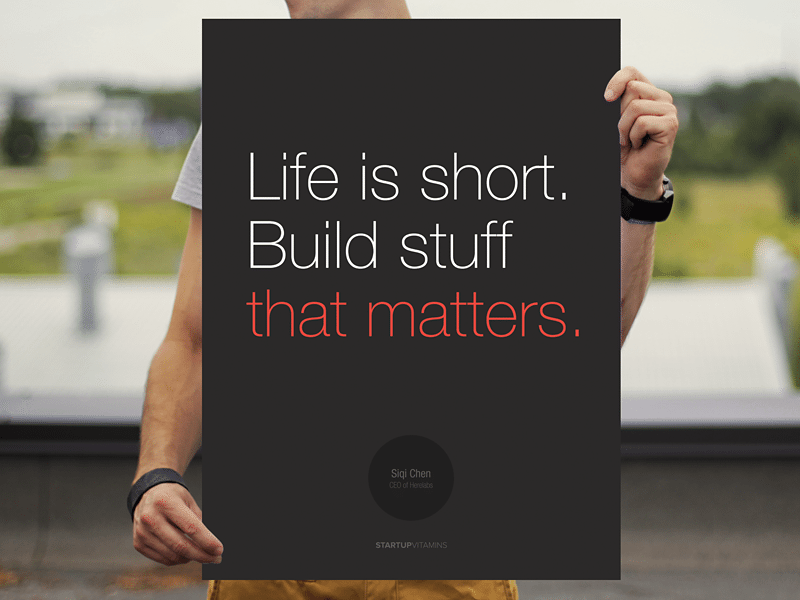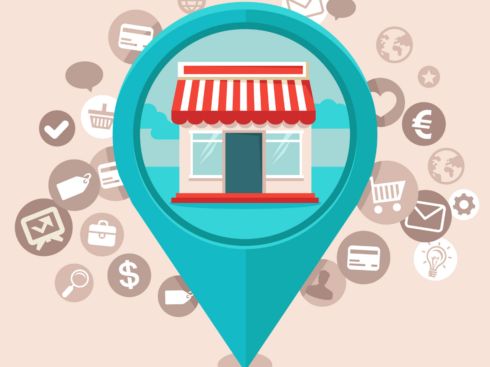
I have been a foodie all my life and my love for food ensured that my association didn’t end there. A couple of years ago, my friends wanted to start a restaurant and were looking for partners, without a second thought I jumped at this proposition. I was also working on a restaurant POS startup in parallel at the time –my own startup. Below are my experiences from “passively” running a traditional brick and mortar business (Dhanda).
Things that I learnt
It’s all about the location
You would think that in this day and age, when online/phone orders have become ubiquitous, the location of a restaurant shouldn’t really matter, right? You’d be surprised to know that isn’t the case. Although location obscurity can keep the overhead costs low, a word-of-mouth marketing cannot offer what a good location can. Restaurants mostly are in the real estate business. The success of a good restaurant depends primarily on how well it’s located barring the coffee shops/ QSR chains like subway etc. In hindsight, it was a good decision to choose a prime location over picking an obscure one.
A main road location, with an obvious handicap in parking is preferred over a not so obvious location.
The numbers never add up
Typically, this is how you the cost numbers should stack up. There are fixed costs like the salaries and overheads viz. rent, electricity, water and variable costs like food cost (cost of raw materials calculated as a % of seling price of the poduct), packaging costs, cost of delivery and of course the wastage. Based on these estimates you make a pretty excel sheet which details your gross/net profit, time to break-even etc. and everything looks perfect.
Until reality slaps you across your ignorant face because you haven’t accounted for
- Property taxes going up by 200% overnight
- Political instability in the state(Andhra Pradesh) causing your revenues to drop by over 20%
- Power insufficiency in the city (Cost of providing backup shoots up by over 30%)
- Increase in the electricity tariff
- Increase in the water bill due to depletion of the water table.
No amount of planning can really keep you prepared for these situations. These events completely throw your business off balance and your cash position which was supposedly strong on paper is beaten up now and you end up spending sleepless nights dreading salary day. The most important learning for us here was realizing the importance of, CASH and you need to hang onto it with dear life no matter what.
From the Aditya Birla group website
Kumar Mangalam Birla works “normal Bombay hours”, except that he is also in office on Saturdays and half of Sundays. On each of those days, he would like to know how much cash came into his group and how much went out. Not turnover, not profit. CASH.
Nothing better than waking up to news like property tax increase and power prices increasing
Old school advertising works, and how!
I always wondered why businesses would advertise via newspaper pamphlets. “When was the last time you used a newspaper pamphlet”, I would question my partners and tried to encourage them to experiment with much more effective means of marketing( Justdial, Zomato etc.). After much thought we decided to give newspaper pamphlets a shot and the results were amazing . We noticed a sharp increase in our sales (20-25%) in the week pamphlets were sent out. The ROI we noticed was much higher than any other channels of marketing (primarily because the ROI from Zomato and Justdial were not good enough in our locality). I started to believe that for any local business, pamphlets are an extremely good way of reaching out to the local/target consumers. We also tied up with a few local businesses around the area to send out joint pamphlets. This further decreased costs by 50%.
People problems
Ask any restaurateur what his/her three biggest pain points are and everyone will include hiring and retention of staff in the list. Attrition levels are extremely high across the restaurant industry.The staff at most restaurants are ready to jump ship even for a marginal increase in salary. I believed that having a process for recruirment place would significantly reduce the hiring cycle and yield better results. So I jotted down a plan which included posting in classifieds, websites for blue collar jobs and contracting a HR agency to decrease the hiring cycle time. These initiatives bombed spectacularly, we ended up getting very low quality people and these initiatives increased our hiring cycle time increased drastically.
We followed a different approach(which seemed far fetched to me initially) for hiring after the above mentioned disaster. We ended up going to our favorite restaurants across the city made small talk with the staff, saw how they worked and sometimes even bribed the waiter to give the number of the chef for a “catering” party. The throughput from this process was much higher and we got very high quality people. Its even more difficult to find cleaning staff, and a bad experience with professional hiring services didn’t help either. That was when we realized that there are “addas” near local train stations and mandi areas which are basically a “marketplace” for on demand hiring which worked all-the-time.
Firefighting becomes a way of life
We naively thought hiring a manager would put an end to a lot of fire fighting that ended up taking a lot of our bandwidth. We realized, in a single unit restaurant its pointless to hire a manager. We never had a manager stay with us for more than 2 months at a stretch. We learnt to groom people from the bottom up and help them grow into such a responsibility. Until then firefighting becomes a way of life. You double up as an electrician, plumber, home delivery guy, and also occasionally take out the trash.
Things that worked
Measure everything!
One of the biggest cost center in a restaurant is the food/input cost. Usually from what we have seen the industry benchmark for this is around 30%. We never got around to measuring what our exact food costs were due to extensive/inevitable firefighting. But once the storm calmed down, we decided it was high time to measure everything to the T. We realized that our food costs were twice that of normal which lead to major margin erosion. This attention to numbers helped us take a leap of faith and increase prices (this is one of the toughest decision for a businessman to take,by doing this you either run the risk of alienating your customers who have bracketed you as a VFM joint will or eventually die after bleeding cash continuously) which slowly helped us in increasing margins.
Maximize sales without adding capacity
We realized that we were under-utilizing our kitchen by about 50% because of the capacity of our restaurant (1000 sq feet). Restaurants are primarily a local business and majority of revenues come from walk-ins from people who stay in and around 2 kms. It is impossible to increase the number of covers (seating capacity).
This was when we increased our home delivery reach by another 4 kms and implemented a no minimum order rule. This helped us increase home delivery sales by about 30% in a couple of months without adding any additional capacity. We also introduced products every week which were on the higher end. This lead to a substantial increase in revenue per cover.
Incentivizing loyalty
The holy grail of a local business is to measure and incentivize loyalty. This helps in decreasing customer acquisition costs and helps increasing the frequency of walk-ins from the same customer. We learnt that 80% of our customers were repeat customers so it was very important to find a way to measure this. A simple turnaround we introduced was to take orders over a mobile phone against a land-line and note down the name and address of every customer for orders. This decreased the order time for the customer and also helped us to incentivize every loyal customer based on the call log history.
Adoption of Technology
Like most small and medium restaurant owners, we invested very little or nothing in technology to improve processes and make operations more efficient. Because the only metric we were concerned about was increase in sales, everything else was noise. So much so that if you are a sales guy not from Zomato or JustDial your sales cycles are guaranteed to be on the higher side if you are selling to small restaurants (sometimes, we pretended to be customers in the restaurant to avoid conversations with sales people).
This trend however has been changing gradually as a few products like Exotel, Zomato (dashboard) have paved the way in making small and medium restaurateurs sit up and take note of the changing landscape in the way of doing business.
Things you need to keep in mind while doing a traditional business
-
- Cash is more important than your mother
- People management(vendors, suppliers, staff) should not be taken for granted
- Firefighting is not optional
- Cash is more important than your mother.
Things that need to change
-
- Slow adoption of technology to streamline operations and processes
- The importance of metrics is not appreciated (analysis over intuition)
Disclaimer: The above observations mentioned are extremely anecdotal in nature and I have tried extremely hard (and failed miserably) to not make sweeping generalizations about things, so please take everything said above with a pinch of salt.
About The Author – Nandan Reddy
This is a guest post by Nandan Reddy, who runs a restaurant, Zurna and also a technology business. This post is a collection of thoughts and insights from his time running and building Zurna from an engineer’s stand point, and then a restaurateur’s stand point


























